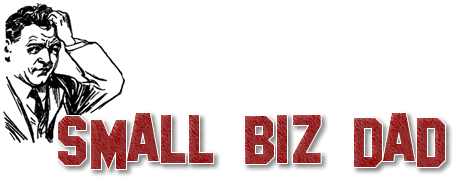When you come up with a product, it can feel like catching lightning in a bottle even when, sometimes, it’s really not. Too many people rush an idea to market before testing it from every angle only to be surprised when it’s not the surefire hit they were expecting. A sense of intuition and even luck plays into every product’s success. But so does ensuring that you’re informed and making a justified gamble, as opposed to giving it a straight up roll of the dice. Here are a few questions worth asking about your product before you decide it’s ready for its grand reveal.
Does It Solve A Problem?
First and foremost, your product needs its raison d’etre. For the vast majority of products, that means finding the problem it solves as recommended at https://www.businessknowhow.com/marketing/solveprob.htm. The problem doesn’t necessarily have to be life and death. It could be helping them do something more efficiently, more affordable, helping them live a certain lifestyle, or enjoy a certain meal.
But if you can’t identify the problem that your product solves, then you can’t identify why people are going to feel the need to buy it, to begin with. That means you need to take it back to the drawing board and start from scratch.
Does It Do Anything Different?
It isn’t always completely necessary that your product is revolutionary. Even if it’s not particularly unique, you can help it look like it is with some branding. But beyond branding, it’s good to identify what your product does differently from its competitors. Is it more convenient? Is it cheaper? Does it target a specific niche that the others on the market don’t? Is it designed and built sustainably, making it eco-friendlier?
If you can find the difference in your product, then you are going to immediately have a unique selling point which is a lot more appealing to the customer than offering more of the same. The problem it solves is the main attraction, but the difference it offers to competitors is the heart of the branding.
Do You Know The Market?
Who is going to be interested in the product? Never say “everyone”, because that’s never going to be true and it’s not a helpful way of thinking. You can target a broad range of demographics, but it’s a good idea to have an ideal buyer persona in mind. As https://offers.impactbnd.com/the-buyer-persona-kit shows, this can help you build a kit that you use to test different marketing styles, techniques, and brand messages.
The better you know the customer, the more attractive you can make your product. Think about who is already going to get the most use of the product and gear the branding towards them. If the product is broadly appealing enough, it will eventually reach beyond that initial market. Just don’t try to go too broad, early. Go deep, instead.
Do You Know How To Package It?
Products are only as good as how they’re sold and if you haven’t figured out how to do that, then it’s definitely not ready for the market. In the most practical terms, this means thinking about how they’re packaged. If the product is another entry to an already competitive market, you have to differentiate it. But you also have to learn from what’s out there, especially the visual language of the packaging.
Look at the range of different packaging options available at places like https://freundcontainer.com/containers/bottles/glass-bottles. There, you will see a variety of containers that have very clear links to certain products. When customers see the container, they might think that a few specific products are inside it. You need to think about which packaging and container are going to most quickly communicate the product’s purpose and selling point to the customer.
Can You Weigh Up The Costs?
Packaging and containers cost money, of course, which brings us on to one of the most important parts of the product. We’re talking about profitability. How much does it cost to manufacture? How much does it cost to ship? How much does packaging cost?
Weigh up all the costs and ensure they give you room to arrive at a price point that is both profitable but also reasonable to customers. If you’re charging more than your competitors, you have to go all into that bold move by ensuring that the branding and marketing are aimed specifically up-market from them.
Has It Been Thoroughly Tested?
There is a range of tests you need to run on any product before it hits the market. First of all, you need basic consumer testing as shown at http://www.intertek.com/consumer/testing/ to make sure that it’s safe, non-toxic, environmentally friendly, and so on.
But you also have to test the reaction amongst the market. Taking your product to trade shows, giving demonstrations, and sending it to influencers and consumer groups is a great way to get some feedback that can help you finalize the product or even take it back to the drawing board if that’s necessary.

Is The Market Ready For It?
If it’s testing well and you’re happy with it, then the product is almost ready for the market. You just have to make sure the market’s ready for it, too. The launch of the product shouldn’t be rushed, it should be planned. This is where the majority of the marketing budget is going to go and when you want to focus on outreach to influencers and other potential partners.
You need a marketing plan, but you might also need a little help. Outsourcing some marketing tasks or working with a business coach can help you keep up with the demands of the launch, which can be a very busy and stressful time. Make sure that the market is already aware of the benefits of the product before launch day arrives.
With the tips above, you can give any product a much better chance at success. It’s never a sure thing and you need to keep supporting it with marketing and good customer service. But the steps above can give you a start worth building off.



